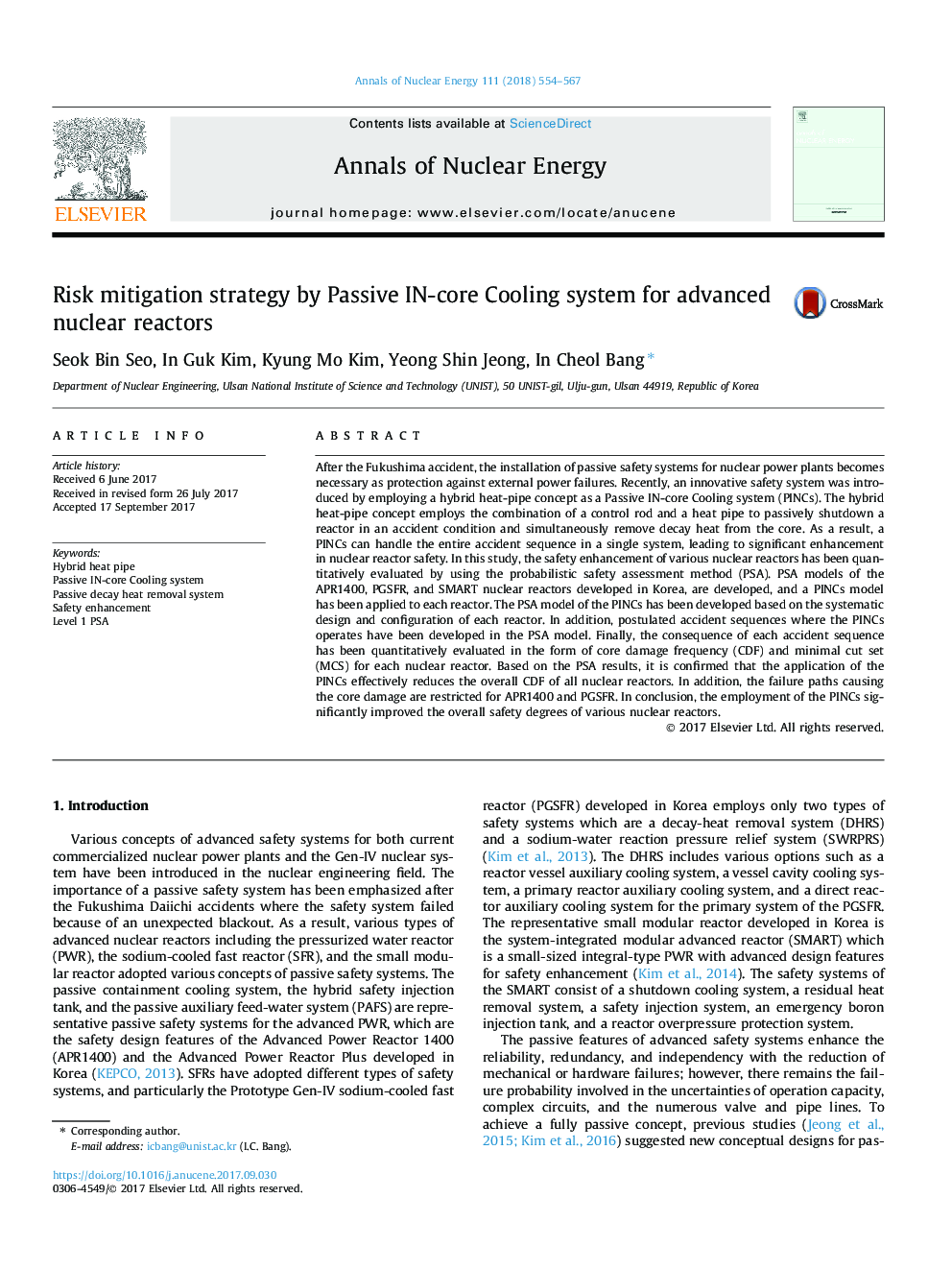| کد مقاله | کد نشریه | سال انتشار | مقاله انگلیسی | نسخه تمام متن |
|---|---|---|---|---|
| 5474825 | 1521085 | 2018 | 14 صفحه PDF | دانلود رایگان |
عنوان انگلیسی مقاله ISI
Risk mitigation strategy by Passive IN-core Cooling system for advanced nuclear reactors
دانلود مقاله + سفارش ترجمه
دانلود مقاله ISI انگلیسی
رایگان برای ایرانیان
کلمات کلیدی
موضوعات مرتبط
مهندسی و علوم پایه
مهندسی انرژی
مهندسی انرژی و فناوری های برق
پیش نمایش صفحه اول مقاله

چکیده انگلیسی
After the Fukushima accident, the installation of passive safety systems for nuclear power plants becomes necessary as protection against external power failures. Recently, an innovative safety system was introduced by employing a hybrid heat-pipe concept as a Passive IN-core Cooling system (PINCs). The hybrid heat-pipe concept employs the combination of a control rod and a heat pipe to passively shutdown a reactor in an accident condition and simultaneously remove decay heat from the core. As a result, a PINCs can handle the entire accident sequence in a single system, leading to significant enhancement in nuclear reactor safety. In this study, the safety enhancement of various nuclear reactors has been quantitatively evaluated by using the probabilistic safety assessment method (PSA). PSA models of the APR1400, PGSFR, and SMART nuclear reactors developed in Korea, are developed, and a PINCs model has been applied to each reactor. The PSA model of the PINCs has been developed based on the systematic design and configuration of each reactor. In addition, postulated accident sequences where the PINCs operates have been developed in the PSA model. Finally, the consequence of each accident sequence has been quantitatively evaluated in the form of core damage frequency (CDF) and minimal cut set (MCS) for each nuclear reactor. Based on the PSA results, it is confirmed that the application of the PINCs effectively reduces the overall CDF of all nuclear reactors. In addition, the failure paths causing the core damage are restricted for APR1400 and PGSFR. In conclusion, the employment of the PINCs significantly improved the overall safety degrees of various nuclear reactors.
ناشر
Database: Elsevier - ScienceDirect (ساینس دایرکت)
Journal: Annals of Nuclear Energy - Volume 111, January 2018, Pages 554-567
Journal: Annals of Nuclear Energy - Volume 111, January 2018, Pages 554-567
نویسندگان
Seok Bin Seo, In Guk Kim, Kyung Mo Kim, Yeong Shin Jeong, In Cheol Bang,